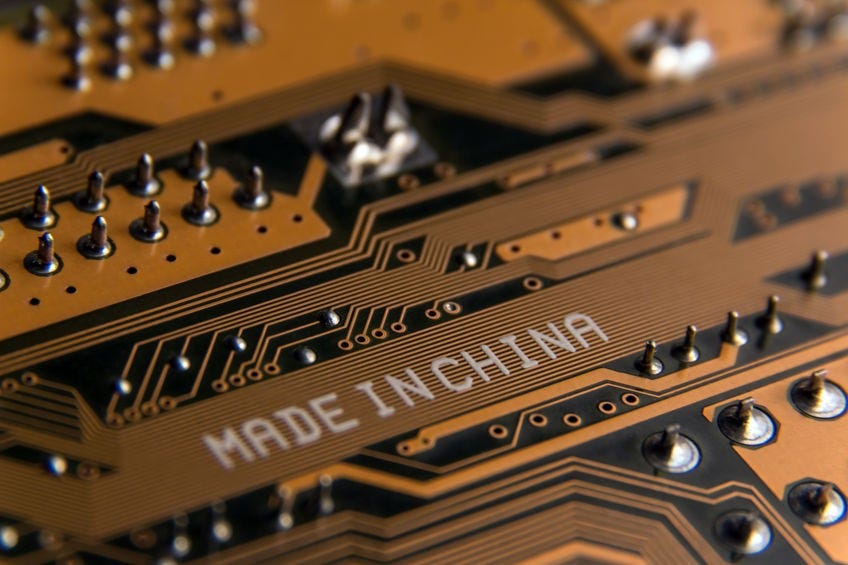Unmade in China?
The Great Electronics Supply Chain Shuffle
It used to be that “Made in China” was the inevitable stamp on nearly every tech gadget lining store shelves. Now, words like “China Plus One,” “India,” “Vietnam,” and “Mexico” are cropping up in boardrooms everywhere. Apple wants 25% of its iPhones churned out in India by 2027; Samsung’s eyeing new manufacturing hubs to dodge the U.S.-China trade crossfire. The question on everyone’s lips is whether this really signals the unmaking of China’s decades-long electronics dominance.
The immediate answer? No. Not by a long shot apparently from a recent discussion on LinkedIn. If you ask people like engineer and manufacturing consultant Bob Moore, they’ll tell you China’s not getting shoved aside—“It’s just another supply chain shuffle,” he says. “China still dominates, but companies are hedging their bets.” That might sound like corporate fence-sitting, but it’s a familiar dance: diversify enough to calm the shareholders without losing access to China’s unparalleled infrastructure.
And “unparalleled” isn’t hyperbole. Tomasz Taubert compares China’s bullet trains to America’s sputtering Amtrak, a metaphor that nails how far ahead China is in the game. “Not even one bullet train, let alone infrastructure,” Taubert quips about the U.S. The implication is clear: you want cutting-edge capacity, you stick to the place that practically pioneered rapid-turnaround electronics—Shenzhen. But that hasn’t stopped Apple from calling India “the next big thing,” or Samsung from scouting fresh ground. Because politics, quite frankly, is breathing down their necks.
It’s not just about Washington slapping tariffs on Chinese tech or restricting chip sales. Some customers—especially those worried about data security or PR optics—now bluntly say, “No China, please.” That rubs a few folks the wrong way. Yoann Boudou, a French tech entrepreneur entrenched in China’s manufacturing scene, calls it overblown. “I’ve yet to see clients say ‘no China’ in electronics,” he counters, insisting that cost and efficiency still trump moral posturing. But times are changing. Or maybe, as Boudou and others suggest, it’s just talk.
One commenter, Andrey Porokhnyuk, doesn’t mince words, accusing China of turning downright toxic under President Xi: “When Japan was winning the market of cheap consumer products, it never tried to rob you on the way,” he says. “Now, under Emperor Xi, China also tries to conquer you, or even kill you.” That’s extreme, but it underscores the growing mistrust some have toward Beijing—and it’s precisely that kind of rhetoric that pushes companies to consider alternate factories in India or Vietnam. Yet many of those “plus one” sites are Chinese-owned factories anyway, as Mert Bulut wryly points out. So how much of this shift is real, and how much is PR spin?
Even if companies do move some assembly lines out, it’s naïve to think China’s entire ecosystem will topple overnight. China still dominates around 80% of the world’s laptop production, and it boasts a workforce with the know-how to spin up prototypes in days, if not hours. “You can’t replicate that scale or speed in a year or two,” says writer and consultant Anindita Biswas, who points out that building new capacity in the U.S. or India is expensive and time-consuming. In the short run, many companies can’t—or won’t—stomach those costs.
Of course, the PR story is different for corporate giants like Apple or Samsung, who can afford to experiment. Smaller players don’t have that luxury and remain tethered to China, crossing their fingers that the next round of trade disputes won’t annihilate their bottom line. “Big players can move, but for most, shifting production is costly and complex,” says T B, a commenter who sees this as a kind of “super chaos era” for everyone else.
So, is this the end of “Made in China”? No—but that doesn’t mean China’s stranglehold is safe forever. A slow drip of partial relocations, especially if Beijing tightens its grip or if trade tensions escalate, can chip away at market share over time. And if more consumers or governments decide China is a reputational risk, we could see a tipping point.
For now, it’s a game of global supply chain chess: big companies line up extra moves, smaller ones brace for impact, and China still sets most of the board. If you’re betting on China’s demise, be prepared for a long wait. If you’re certain it’s bulletproof, you might be ignoring those subtle cracks forming in the wall. Either way, buckle up. The next round of manufacturing headlines will be anything but boring.
What’s your take on the “unmaking” of China’s electronics dominance? Do you see this as a fleeting trend or the start of a lasting shift in global supply chains? Share your thoughts in the comments - let’s keep this debate going!



